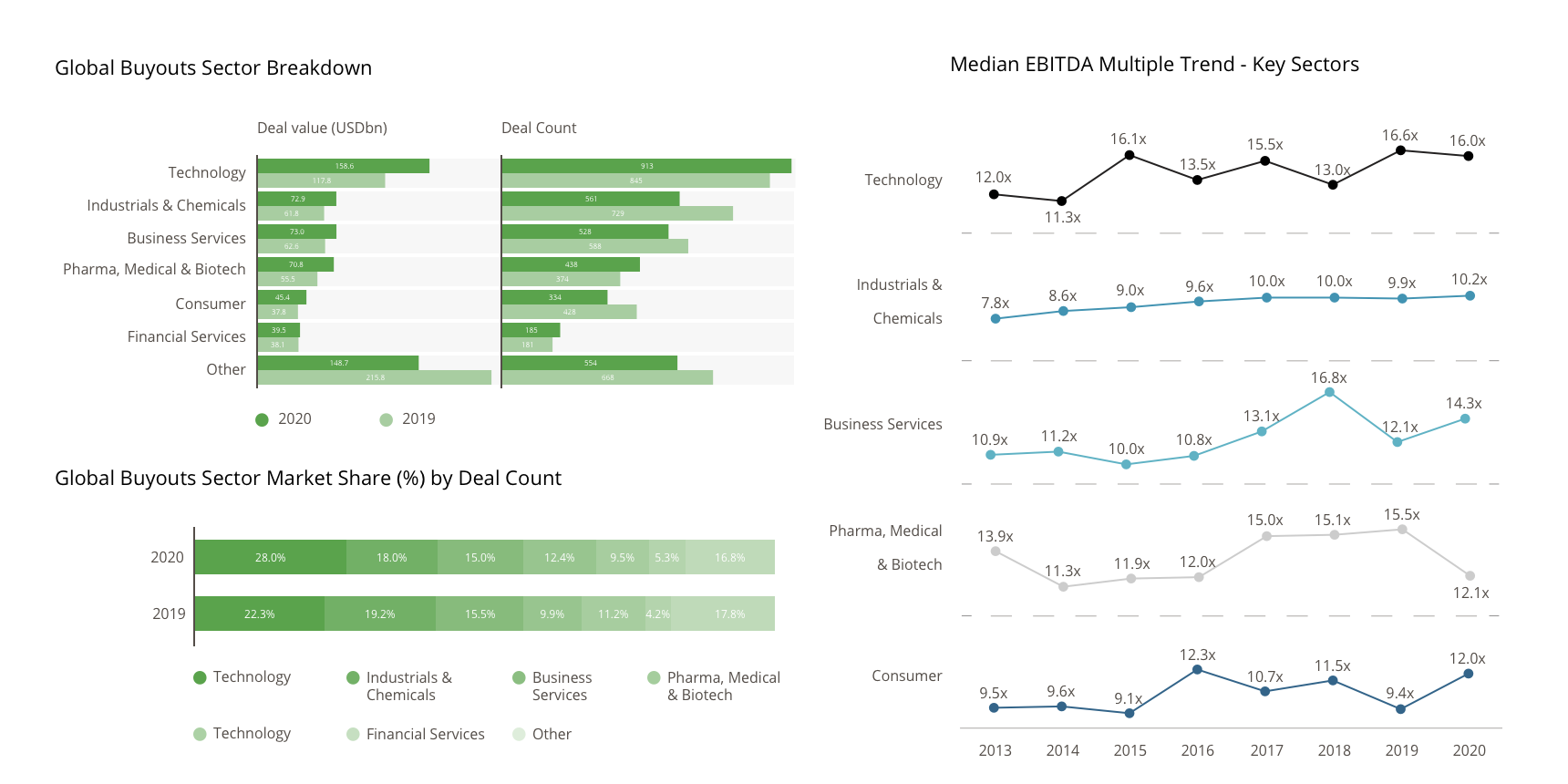The Covid-19 pandemic has brought difficulties for companies and opportunities for others.
After a strong year for mergers and acquisitions (M&A) in 2019, 2020 started out badly. With the uncertainty generated by the pandemic, many companies seemed to be averse to taking risks and preferred to concentrate on their core businesses and protecting income from existing customers.
According to Bloomberg, the value of M&A deals was down 69% in the first half of 2020, the lowest levels since 2012.
M&A activity dramatically improved in the second half of the year, helped by low interest rates coupled with a potential vaccine in sight, according to PwC. Companies looked for strategic purchases and partnerships for innovation and opportunity to meet new emerging demands.
Citing data from MergerMarket, law firm Morrison Forrester said that after falling 25% in the second quarter of 2020, compared to the first quarter, M&A activity rose 90% in the second half of the year. However, in the US, deal value jumped back in Q3 and Q4 but didn’t make up for the drop in Q2.
Total M&A deals worldwide were US$2.817 trillion, down from US$3.370 trillion in 2020, according to Statista.
As the world moved online, the technology, media and telecommunications market was the winning sector in M&A. The sector clocked up US$850 billion in deal value in 2020, almost twice that of the next best sector (energy, mining and utilities was US$480 billion). In the US, technology was the only sector to grow in value over 2019.
Amongst the biggest tech M&A deals of the year were: Salesforce’s acquisition of Slack for US$27.7 billion in December; Uber acquiring rival Postmates for US$2.65 billion in July; and Amazon acquiring autonomous driving startup Zoox for US$1.2 billion in June.
But it was not just the biggest tech companies, the so-called FAANG (Facebook, Amazon, Apple, Netflix and Google), that were doing the buying but many mid-sized companies seeking to buy competitors to consolidate their market positions as well as Private Equity firms taking advantage of the situation
A buyer’s market
2020 was a great year for picking up bargains. On one hand, many companies were in trouble. Perhaps they had been slow to establish an on-line presence and were losing clients to competitors. Short of cash, some of these businesses became receptive to buy-out offers. But as they were in a vulnerable position, they had to drop their purchase value.
According to MergerMarket, acquisitions out of bankruptcy rose 59% in 2020.
On the other hand, interest rates were low as central banks sought to stimulate floundering economies. This encouraged companies to take on debt and take advantage of the unique circumstances to snap up a competitor.
Many of the buyers were not interested only in a competitor’s technology, which in many cases was outdated, but rather their client database, which would enable them to expand geographically and to reach new clients in other market segments.
Opportunities for all
These conditions have also opened up opportunities for private equity firms to buy into struggling companies.
The private equity market posted record numbers in the second half, finishing the year with the highest annual value since the global financial crisis, writes Morrison Forrester. Private equity firms entered 2020 with record levels of cash to spend in a tumultuous market. Sectors in high demand included e-commerce, logistics, agtech and healthcare.
Global Private Equity – Buyouts
Source: (2021, January 05) Global M&A Report with financial league tables. Mergermarket.
And at the same time, it allowed companies like Making Sense to partner with these investors. Making Sense takes on a role as a consultant to help guide companies in creating a business and product roadmap, which often requires implementing technology upgrades.
Some companies are actively seeking to be acquired. However, they need to invest in upgrading legacy technology systems beforehand to increase their market value. Otherwise, it would be a “firesale.” All potential buyers will do the necessary due diligence beforehand to know what they are buying.
While leaders in big tech are often interested in acquiring startups to bring new products and markets into the fold. If they become successful, startups can provide astronomical returns on investment. But they are risky. Private equity firms usually invest in established, but struggling, companies that are deteriorating because of inefficiencies. By correcting those inefficiencies the businesses can become profitable again and the private equity funds can make a gain on selling their stake. As many companies are struggling due to the pandemic, many private equity firms can buy into these companies at a bargain price, meaning a better return later. At Making Sense we had a front-row seat to observe this situation and began to see an increasing number of opportunities this year and last year to team up with private equity firms as technology partners. In our role we act as technology and digital transformation consultants to help correct inefficiencies in the portfolio companies of these private equity firms.
Often, the technological challenges are straightforward and about connecting the dots. Many struggling companies lack a strong mobile, cloud, or e-commerce strategy. Other times, the biggest challenge is more cultural than technological, requiring employees to adapt to a new corporate culture of their buyer. Other times the key people involved in the M&A deal leave the company after the transaction is complete, leaving others to second guess the main drivers behind the purchase in the first place, as well as implement the transition.
The future
What is certain is that all companies and industries will come out the other side of this pandemic having changed. There will be those who adapted and survived and those who didn’t. The big tech firms are thinking ahead of their next move and want to anticipate the next market trend.
They have deep pockets and can take risks by investing in startups. One example is Facebook’s purchase of Giphy, in May last year, for US$400 million. Giphy is a massive GIF library for users to add to their text messages and social media accounts and is seen as a complement to Instagram.
But on the more practical side, all companies will have to boost their platforms with the basics: better payment platforms, improved user experience (UX) on their products and mobile interfaces, more customer-centric digital channels and better customer experience, faster delivery and more efficient supply chain logistics.
Technology can help with all of that. But if the pandemic has taught us one thing, unexpected circumstances creep up on us and customer needs change rapidly, so companies can’t fall behind in their digital transformation processes. They need to always remain one step ahead.


